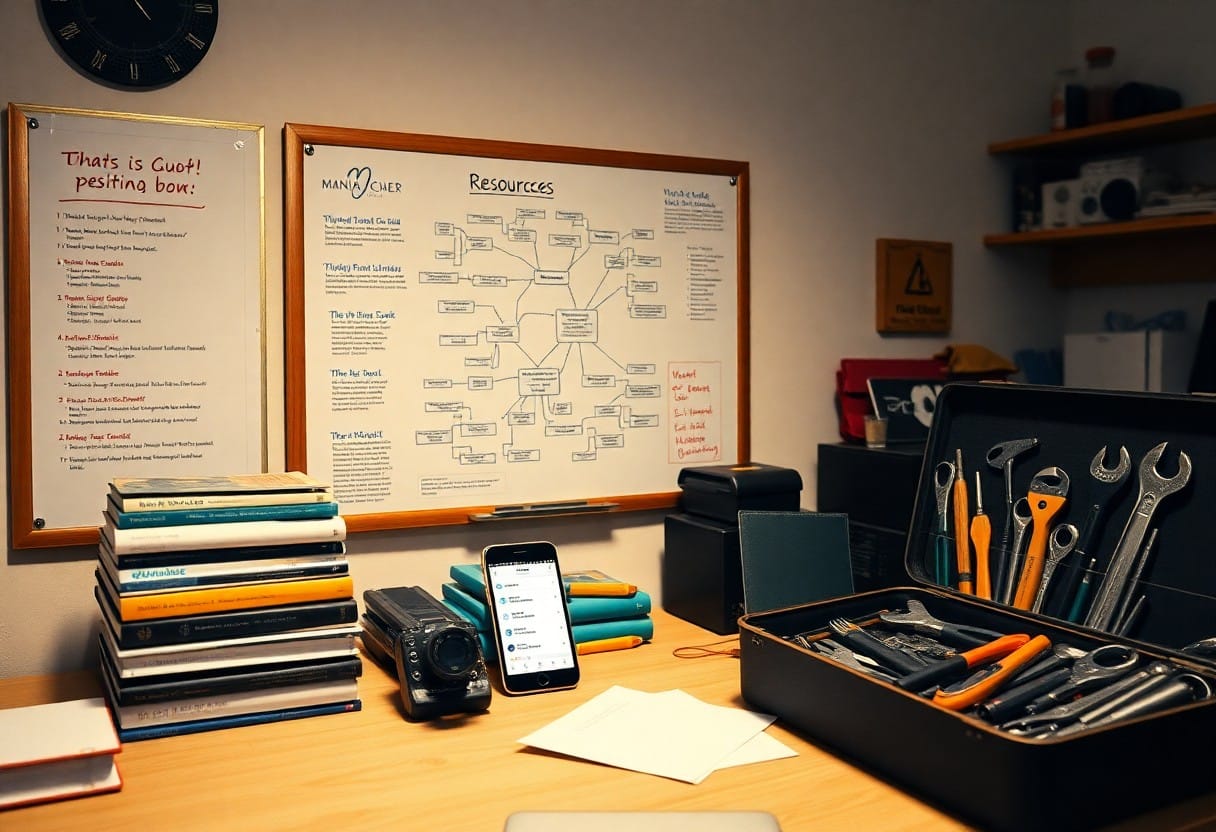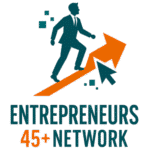You have untapped potential in your skills, contacts, and resources that can significantly impact your personal and professional life. By assessing and leveraging these assets, you can open doors to new opportunities and achieve your goals more effectively. Understanding how to maximize your network and develop your hidden skills will empower you to navigate challenges and enhance your performance. This guide will equip you with strategies to identify and unlock these valuable assets for your success.
Key Takeaways:
- Identify and assess your unique skills and talents that can be leveraged for personal or professional growth.
- Expand and nurture your network of contacts to open up new opportunities and collaborations.
- Utilize available resources effectively to maximize outcomes and support your goals.
Understanding Hidden Assets
Identifying Personal Skills
To unlock your hidden assets, begin by identifying your personal skills. These are often taken for granted, yet they hold significant potential. Make a comprehensive list of your skills, categorizing them into hard skills, such as project management or programming, and soft skills, like communication or teamwork. You might be surprised at the breadth of your abilities. For instance, if you successfully managed a volunteer project, you possess leadership and organizational skills that are highly valuable in both personal and professional contexts.
Engage in self-reflection to uncover lesser-known talents. Consider asking friends or colleagues for insights; their perspectives might reveal skills you’ve overlooked. Analyzing feedback from previous job evaluations can also illuminate strengths that might not be immediately apparent. Emphasizing these personal skills in various scenarios can enhance your resilience and adaptability.
Evaluating Professional Contacts
Your professional network is a significant hidden asset. Take the time to evaluate your contacts systematically. Create a list of individuals you’ve interacted with throughout your career, noting their roles and expertise. This assessment should include not just current colleagues but also former classmates, mentors, and industry acquaintances. You never know when a connection may turn out to be pivotal for a new opportunity or collaboration.
After compiling your contacts, examine how each relationship can be leveraged. Are there individuals who can provide introductions to potential employers or clients? Maybe you have contacts in a different industry who could offer insights beneficial to your current work. Consider reaching out to rekindle relationships with those you haven’t spoken to in a while; a simple check-in can lead to unexpected opportunities.
Leveraging Skills for Growth
Skill Development Techniques
To effectively leverage your skills, prioritize ongoing skill development. Engaging in structured learning through online courses can refine your existing abilities and introduce you to new concepts. Platforms like Coursera and Udemy offer a variety of options, from coding to graphic design, allowing you to tailor your growth journey based on your interests and career goals. Additionally, consider adopting a mentorship model; working with experienced professionals in your field can accelerate your learning through real-world insights and feedback.
Another effective technique is the practice approach. Applying your skills in practical settings—not just in theoretical exercises—can enhance your proficiency. For example, if you’re honing your writing skills, start a blog or contribute articles to online publications. This not only sharpens your skills but also builds your portfolio, making you more attractive to potential employers or clients. Network with peers and attend workshops to stay updated on industry trends, ensuring your skills remain relevant and competitive.
Utilizing Skills in Marketplaces
Once you have developed your skills, consider leveraging them in various marketplaces. Online platforms such as Fiverr and Upwork provide opportunities for freelancers to showcase their talents to a global audience. These platforms allow you to establish yourself in areas like graphic design, writing, programming, or marketing, enabling you to attract clients who value your specific skills. This not only generates income but also helps you build a diverse portfolio and professional network.
Offering your skills on these platforms can yield significant financial returns. For instance, skilled graphic designers can charge upwards of $50 per hour, while experienced writers may earn between $0.10 to $1 per word, depending on the project’s complexity. This dynamic marketplace enables you to not only monetize your skills but also to enhance your visibility and reputation in your desired field. By showcasing successful projects and gathering positive reviews, you can further elevate your profile and transition into higher-paying opportunities.
Networking Effectively
Building Meaningful Connections
Instead of merely collecting contacts, focus on building meaningful relationships. This involves actively listening and engaging with others rather than approaching networking solely as a transactional endeavor. When you attend events or meetings, show genuine interest by asking insightful questions and sharing relevant experiences. By fostering an environment of trust and openness, you create a space where both parties can freely exchange ideas and opportunities. It’s often the personal touches—such as following up or sending a handwritten note—that can solidify these bonds.
Additionally, leverage social media platforms, like LinkedIn, to maintain and deepen these connections. Engage with your contacts’ content by commenting thoughtfully on their posts or sharing articles that resonate with your shared interests. It’s this continuous engagement that turns a simple connection into a potential partnership or collaboration, leading to more significant opportunities down the road.
Strategies for Expanding Your Network
Transitioning from a small circle to a broader network requires specific strategies and a proactive mindset. Start by identifying communities, both online and offline, that align with your interests and career goals. Participate in local meetups, webinars, or industry conferences to immerse yourself in environments where you can meet like-minded professionals. Aim to connect with at least one new individual at each event you attend, as building relationships through regular interaction can lead to future collaborations and referrals.
Consider diversifying your network beyond your immediate industry. Engage with professionals from different sectors who can provide fresh perspectives and insights. For instance, a marketing professional might find value in connecting with someone in tech, leading to innovative approaches and partnerships that wouldn’t have been possible within your field. Finding common ground and sharing knowledge can open doors to unique opportunities.
Incorporating regular networking habits, such as scheduling time each week to reach out to new contacts or reconnect with existing ones, will help you keep your network active and thriving. Aim to have meaningful conversations rather than simply exchanging business cards. This approach ensures that when opportunities arise, you have a strong support system to rely on and share information.

Resource Management
Analyzing Accessible Resources
Effective resource management begins with a thorough evaluation of what you currently have at your disposal. This includes not only tangible assets but also skills and relationships that may not be immediately apparent. Perform an inventory of your skills, financial resources, and network connections, assessing their current value and potential utility. Utilize tools like SWOT analysis to identify strengths and weaknesses within these resources, helping you to gain insight into areas for further development or investment.
Your professional network often harbors untapped resources. Reach out to former colleagues, mentors, and contacts who can provide valuable introductions or insights. Look for collaboration opportunities where you can leverage shared resources for mutual benefit. For deeper exploration into turning these resources into income, check out Unlock Your Hidden Talents: Creative Ways to Increase ….
Maximizing Resource Utilization
To effectively maximize resource utilization, you must adopt a strategic approach that focuses on efficiency and innovation. Start by defining clear objectives that align with your overall goals. By prioritizing resource allocation based on these objectives, you can ensure that your efforts yield the highest return on investment. Techniques such as time-blocking for skill development or setting measurable goals for networking can help you gain control over how your resources are utilized, ensuring that every effort counts.
Consider adopting technology-driven solutions to further enhance efficiency. Software tools for project management can consolidate tasks and help track resource usage, allowing you to identify areas of waste. Regular assessments of resource allocation patterns will inform necessary adjustments and help you stay flexible in adapting to changing circumstances.
Consistently reviewing your approaches and remaining open to feedback can lead to innovative adjustments that maximize the use of your available resources. For instance, repurposing existing content or skills into new formats can create additional value, showcasing your ability to leverage resources in unique ways. Ultimately, the goal is to ensure that every element contributes to advancing your interests and achieving your objectives efficiently.
Overcoming Barriers to Access
Addressing Limiting Beliefs
Every day, limiting beliefs can silently sabotage your efforts to tap into your hidden assets. These beliefs, often dictated by past experiences or societal expectations, convince you that you lack the skills, connections, or resources necessary for success. It’s common to think that you’re not qualified enough or that others are more deserving of opportunities, which can stifle your motivation. To dismantle these barriers, begin by reflecting on instances where you successfully achieved a goal despite your fears. This practice can serve as a powerful reminder of your capabilities.
Challenging your limiting beliefs requires conscious effort. Engage in self-talk that focuses on your unique strengths, and seek out evidence of your past successes. Surround yourself with supportive individuals who reinforce a positive narrative about your abilities. By actively countering negative thoughts with affirmations and constructive feedback, you can retrain your mind to embrace possibility and potential instead of limitation.
Cultivating a Growth Mindset
A growth mindset is foundational to unlocking your hidden assets. This concept, popularized by psychologist Carol Dweck, emphasizes the belief that your abilities can be developed through dedication and hard work. By adopting this mindset, you can view challenges as opportunities for growth rather than insurmountable obstacles. For instance, when faced with a difficult task, consider what skills you can improve upon rather than focusing solely on the fear of failure.
Actionable steps to cultivate a growth mindset include setting specific, achievable goals and embracing feedback as a tool for improvement. Regularly challenge yourself to step outside your comfort zone; even small wins can foster confidence and resilience. Engaging in continuous learning, whether through formal education or self-directed projects, also reinforces the understanding that development is an ongoing process that enriches your skill set and expands your resources.
Embracing a growth mindset transforms the way you interact with your environment and influences your approach to challenges. Rather than viewing setbacks as personal shortcomings, recognizing them as part of your journey reinforces perseverance. You become more likely to embrace collaboration over competition, knowing that sharing knowledge and resources enriches not just your path, but also creates a thriving network for everyone involved.
Action Plan for Unlocking Assets
Setting Goals and Milestones
You need to establish clear, actionable goals to effectively leverage your hidden assets. Start by identifying what you want to achieve—be it advancing your career, expanding your network, or maximizing resources. Break these goals down into smaller, measurable milestones. For example, if your aim is to grow your network, set a target for the number of new contacts you want to connect with each month. This structured approach will provide you with a roadmap and a sense of accomplishment as you check off each milestone.
Each milestone should be specific and intentional. Instead of a vague goal like “improve my skills,” specify which skill you want to enhance and how you plan to do it—like completing an online course or attending workshops. This clarity helps maintain focus and allows you to prioritize your tasks effectively. Ultimately, celebrating these milestones will keep you motivated and engaged in the process of unlocking your assets.
Tracking Progress and Adjustments
To ensure you stay on track, regularly monitor your progress against the goals and milestones you’ve set. Create a simple tracking system—this could be a spreadsheet or a dedicated app—that notes your achievements and challenges. For instance, if you planned to attend networking events but found them unproductive, take time to reassess your strategy and perhaps focus on quality over quantity in your interactions.
Adjustments are part of the journey; being adaptable will empower you to remain agile in pursuit of your goals. If you find certain skills are more beneficial than others, shift your focus accordingly. You might also want to adjust timelines based on your evolving circumstances, which can help maintain your momentum without compromising your overall objectives.
Effective tracking not only highlights your progress but also offers insights into patterns you may not have recognized. For example, you may discover that networking at specific industry conferences yields better connections than other methods. Utilize these insights to refine your approaches further, ensuring that your plan effectively aligns with your evolving goals and potential opportunities.
To wrap up
From above, you have explored the significance of identifying and leveraging your hidden assets, which include your skills, contacts, and resources. By taking inventory of your unique talents and building relationships with those around you, you can create opportunities that may have previously seemed out of reach. The potential for growth and development lies within your grasp, and by actively pursuing these pathways, you set yourself on a trajectory toward personal and professional success.
Moreover, utilizing tools and frameworks such as the A Guidebook to Community Asset-Mapping can significantly enhance your understanding of your resources and capabilities. This guide provides practical steps for mapping local assets and networks, helping you to forge valuable connections and unlock opportunities in your community. Embrace the process of asset discovery, and you will find the support and resources needed to thrive.



